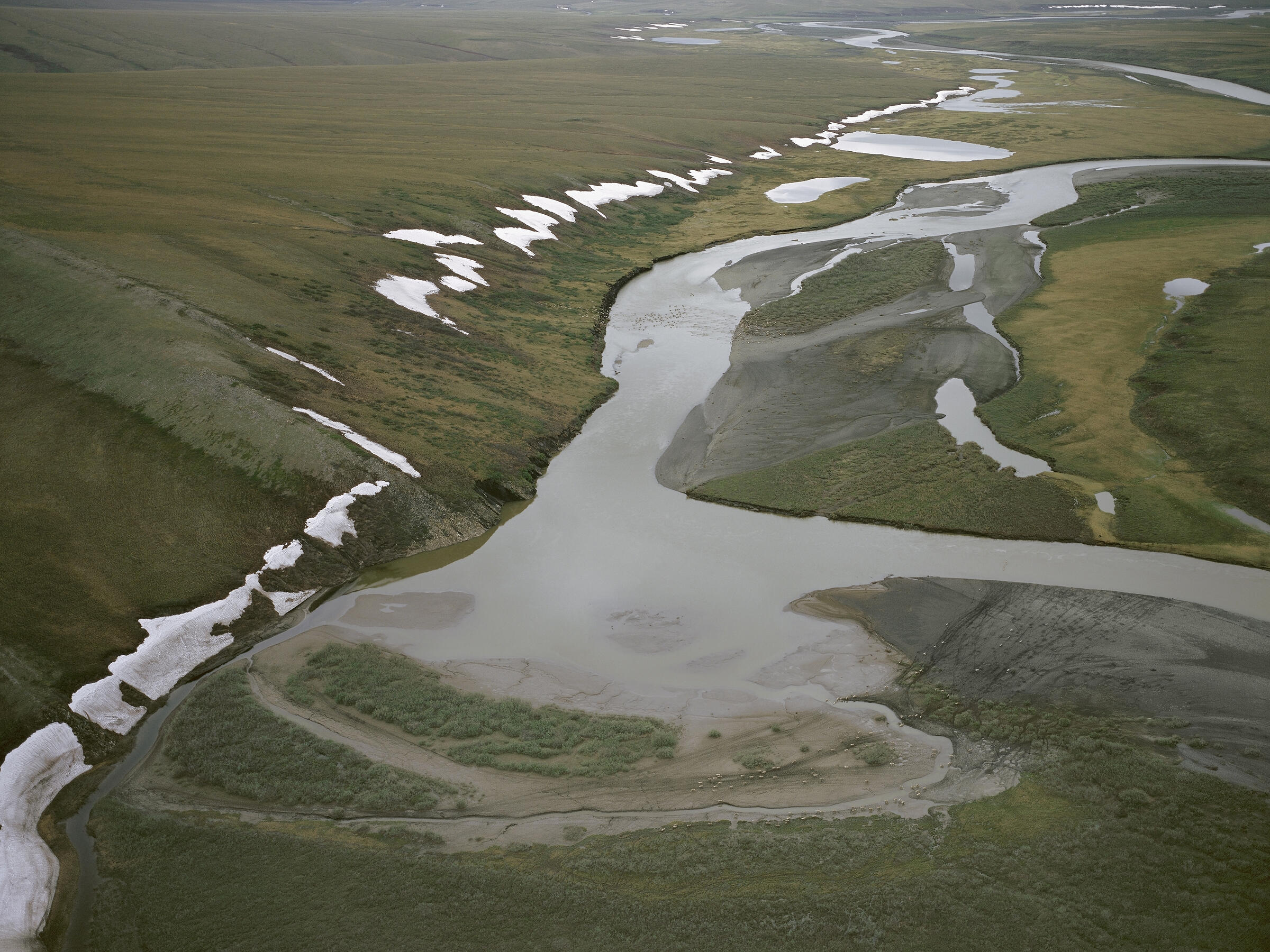The 7.1 million-acre Utukok Uplands Special Area is a critical calving and insect relief area for the 164,000-head Western Arctic Caribou Herd—one of the two largest caribou herds in Alaska. Caribou in those numbers are a keystone species, providing resources for scavengers, birds and mammals, predators, and people.
“There have been about 15,000 caribou harvested each year, mostly by Alaska Natives,” Dr. John Schoen, a retired wildlife ecologist who spent 14 years as the senior scientist for Audubon Alaska, says. “There are 40 Native villages that depend on that caribou herd. So that herd is really important to the culture and subsistence values of many villages and many Native people.”
The Utukok Uplands are also valuable to grizzly bears, wolves, and wolverine—all iconic Alaskan species. “The wilderness values there match any in the world,” he says.
Management of Utukok Uplands
The current area-wide management plan for the National Petroleum Reserve-Alaska places several designated Special Areas, such as the Utukok Uplands Special Area, off-limits for oil and gas leasing. This plan provides a responsible balance that protects ecologically sensitive areas while still allowing energy development to occur in less sensitive areas.
How you can help, right now
Donate to Audubon
Help secure the future for birds at risk from climate change, habitat loss and other threats. Your support will power our science, education, advocacy and on-the-ground conservation efforts.
1% for the Planet
We are proud to be part of the 1% for the Planet network. If you own a business, please consider joining 1% for the Planet to support Audubon Alaska’s conservation efforts.





